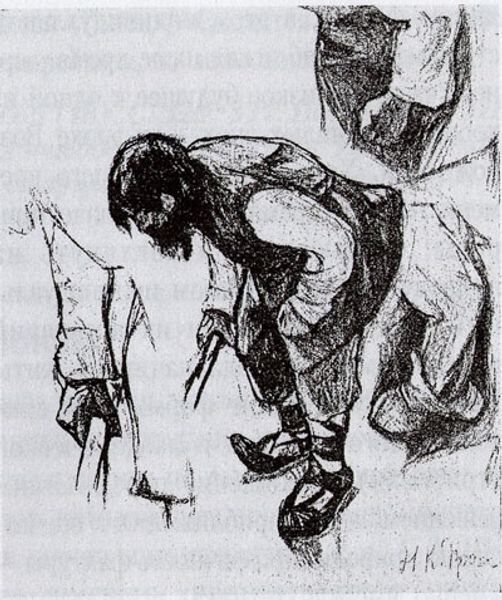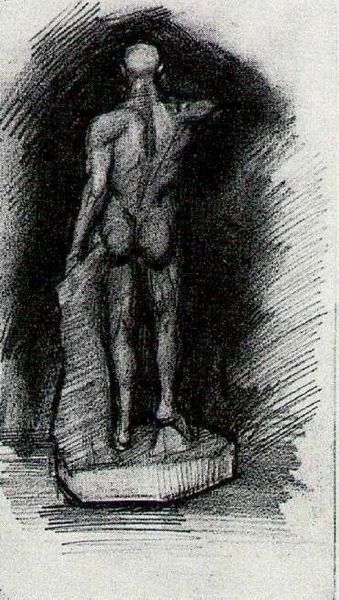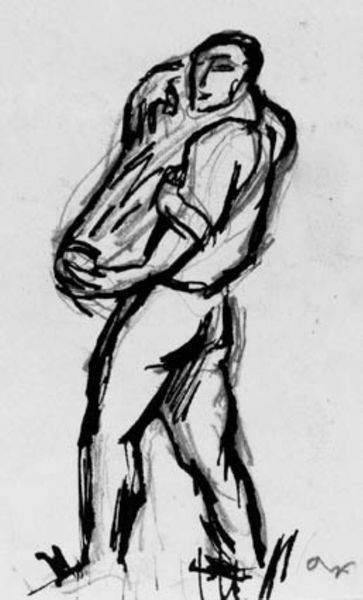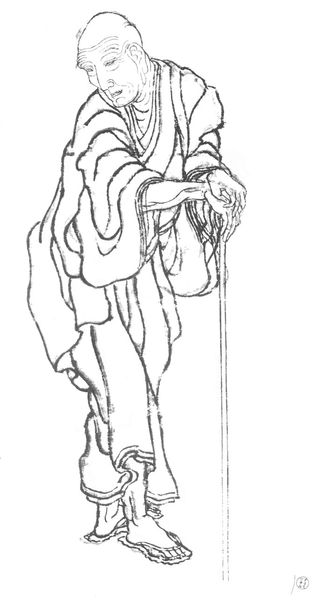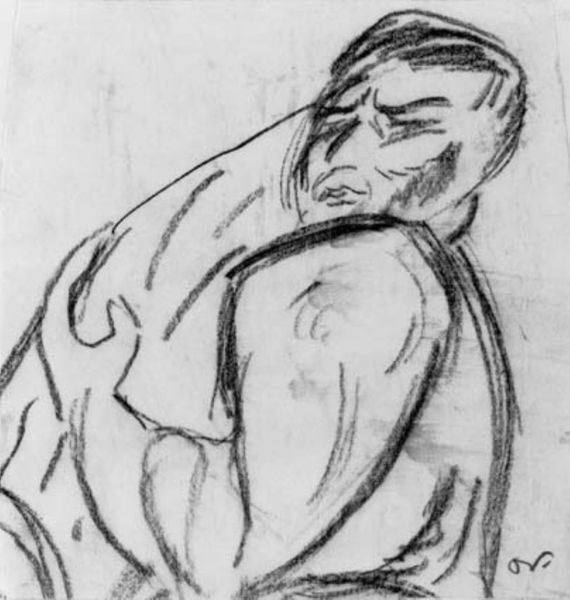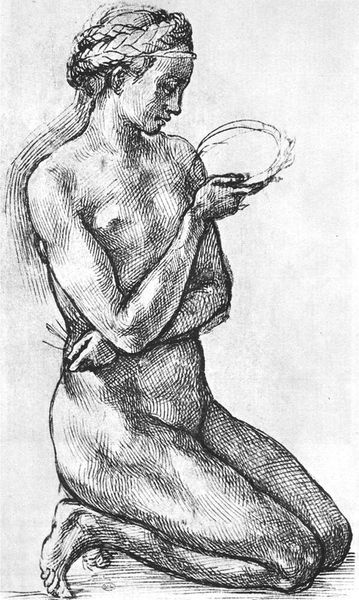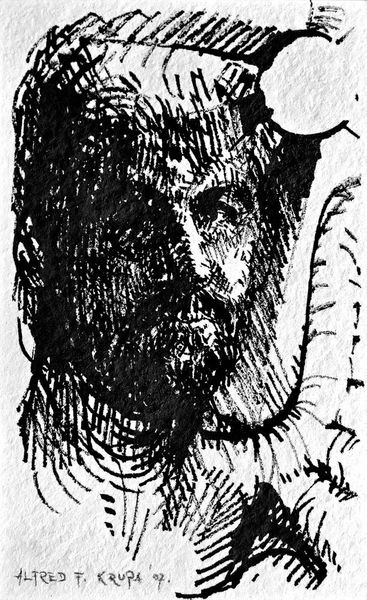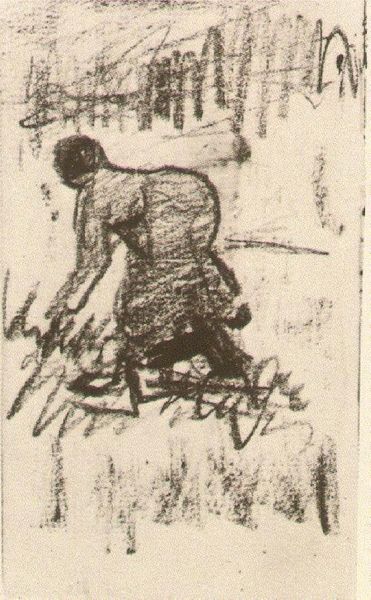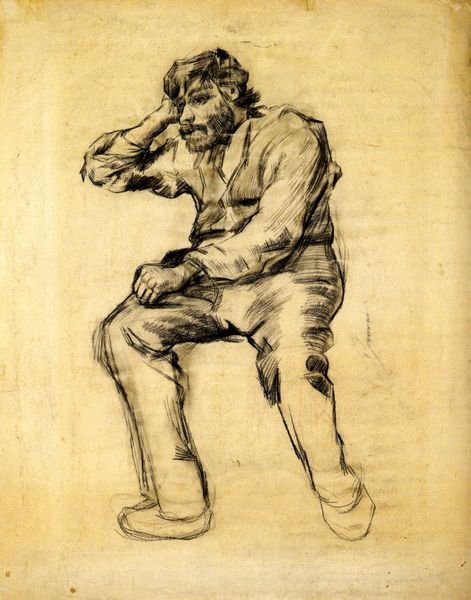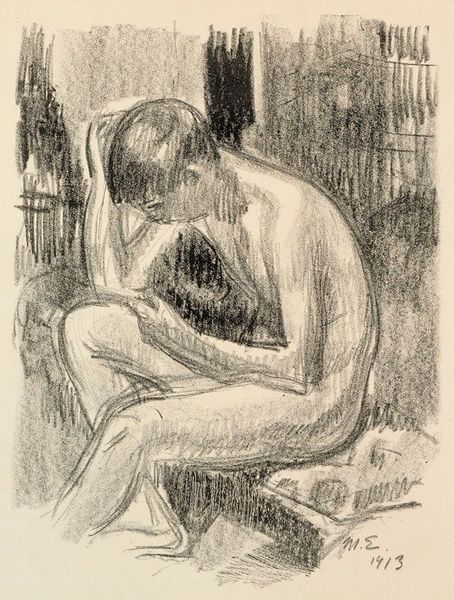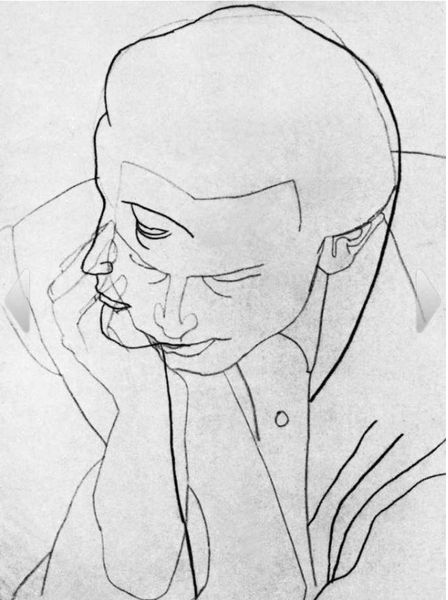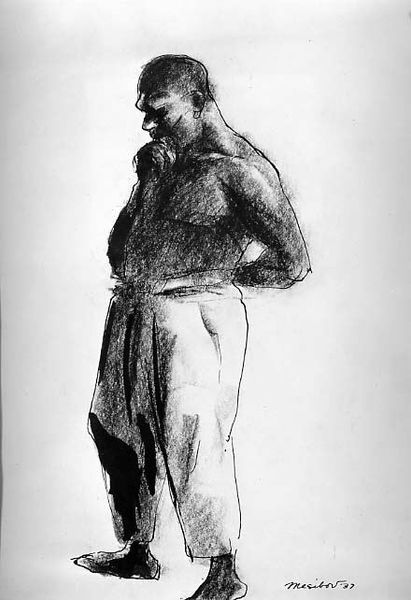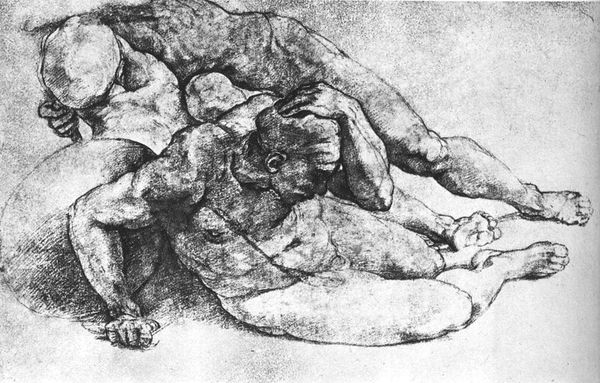
drawing, graphite
#
portrait
#
drawing
#
graphite
#
portrait drawing
#
nude
#
male-nude
#
realism
Copyright: Public domain
Editor: Here we have Nicholas Roerich’s "Study," created in 1901 using graphite as the medium. It presents a stark image. The subject seems lost in contemplation, maybe even despair, drawing into themself, huddled, and vulnerable. What can you tell me about it? Curator: It is important to situate this drawing within the context of early 20th-century art. Think about the rising interest in psychology and the inner self at the time. Roerich, while perhaps best known for his later mystical landscapes, here engages with a classic artistic subject, the nude figure, but does so in a way that emphasizes vulnerability rather than idealized form. Notice how the man is not posed heroically, but withdrawn. How does the medium contribute to this effect? Editor: Well, the graphite seems to allow for a certain rawness, a sketch-like quality that underscores the unfinished or perhaps, internal state of the subject. Curator: Precisely! It moves away from the polished academic nudes that were common, perhaps offering a comment on the shift in societal attitudes. Consider the politics of representation. Who gets to be portrayed, and how? This isn't about idealizing the male form, but something else. Editor: I see your point. The drawing makes me wonder if it’s meant to show a break from tradition or, in some way, comment on the experience of existing in that era. I was initially reacting to the aesthetic qualities of this drawing. But understanding the social and historical context really adds to it! Curator: Exactly! It’s about acknowledging how institutions and societal values influence what we see and how we interpret it. I also find myself reassessing this image in a completely different light. Editor: Thank you. I never thought about art from that lens.
Comments
No comments
Be the first to comment and join the conversation on the ultimate creative platform.
